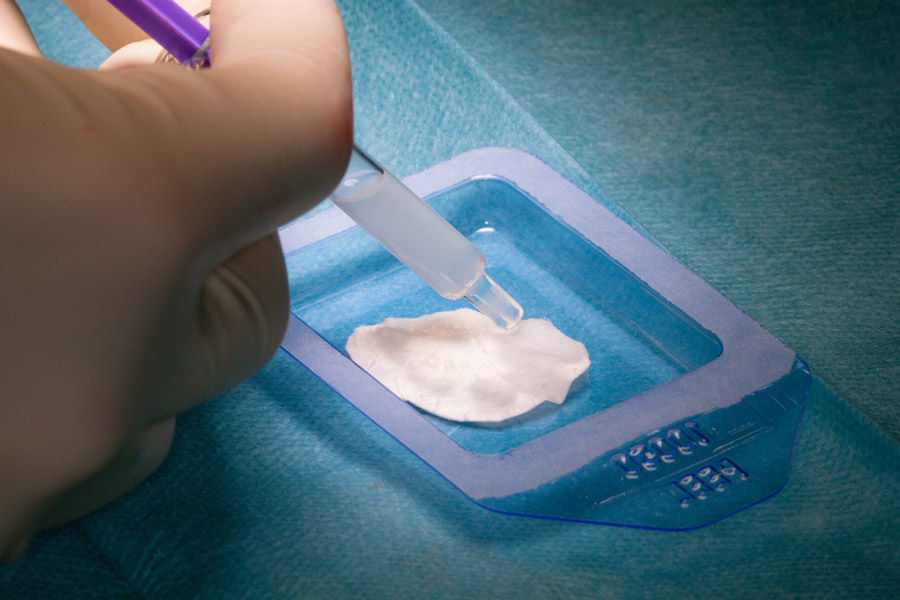Cartilage damage
Regenerative cartilage therapy: microfracture and MACT
Cartilage damage in the joint can be caused by injuries, overloading or degenerative processes. Since the articular cartilage is a limited self-healing capacity special regenerative procedures are necessary to restore the function of the affected joint.
Proven treatment options include Microfracture for minor cartilage lesions and the matrix-associated chondrocyte transplantation (MACT) for larger defects.
Microfracture
This method is indicated for isolated, small (< 2 cm²), well-demarcated cartilage lesions with preserved subchondral bone layer.
Treatment method
In this regenerative procedure, small holes are arthroscopically “picked” into the defect area, from which mesenchymal stem cells then migrate and form regenerative cartilage tissue.
Individual therapy for sustainable joint preservation
Gentle, regenerative procedures for cartilage regeneration
Improved mobility & long-term pain reduction

Matrix-associated chondrocyte transplantation (MACT)
Treatment method
Basically, this is a two-stage procedure:
- First surgery: Arthroscopic removal of cartilage cells from a less stressed marginal area of the knee joint.
- Cell proliferation in the laboratory: The removed cartilage cells are cultured, multiplied and applied to a biphasic matrix.
- Second surgery: After approximately 3 weeks, the three-dimensional construct is transplanted minimally invasively into the cartilage defect.
Additional treatment for bone damage
If the underlying bone is also affected, the defect can first be lined with the body's own (autologous) cancellous bone. Cartilage cells are then implanted over it.
Modern cartilage therapy for your mobility!
Get advice!
Make an appointment now for a personal examination and treatment:
+49-(0)89 4140-7840
sportortho@mri.tum.de
House 524
Ismaninger Str. 22
81675 Munich

